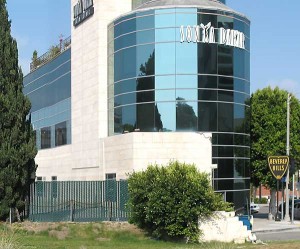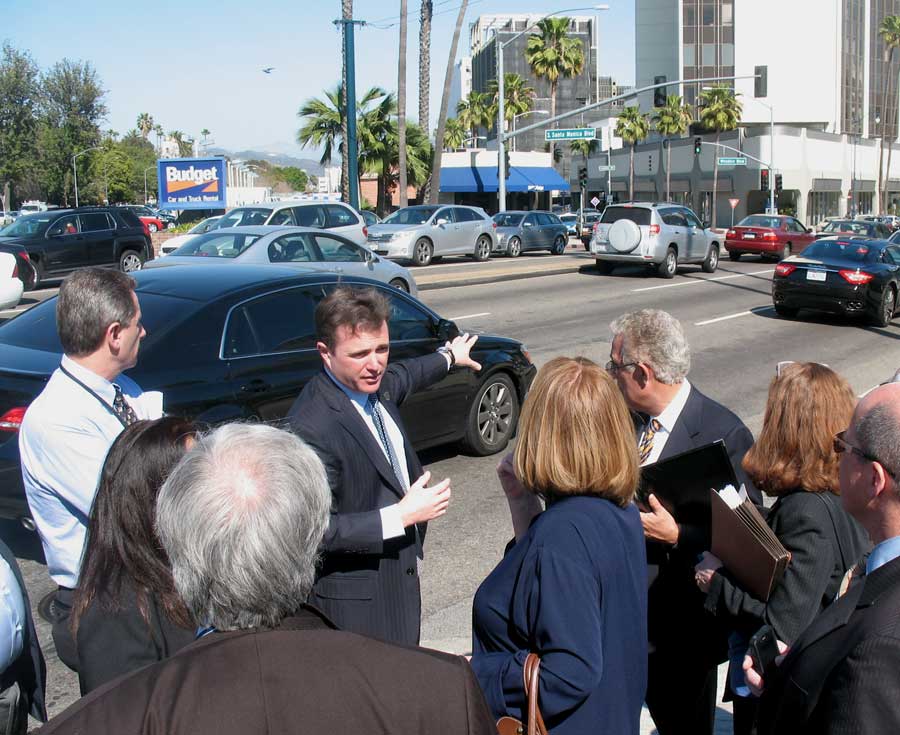Gateway Goes to Council Tonight
Sustainable Parking Standards Act of 2012 (AB 904) Rethinks Parking Minimums
The proposed Gateway Overlay Zone and its emphasis on more parking comes just as the state legislature begins to debate the place of parking minimums in the city of tomorrow. AB 904 foregrounds parking minimums as the unseen force that shapes how cities develop. By bringing the policy into focus, we can ask, finally, Do parking minimums even serve how we want to live and move about the city tomorrow? Does such a policy merely lard up housing to the point where it is infeasible (i.e., it doesn’t ‘pencil out’)? When expensive parking is priced into the unit cost, we don’t let the market determine “sufficient but not excessive” parking.
The legislation reflects the state’s standing policy objectives to reduce greenhouse gases and promote infill development and seeks to encourage the creation of walkable and bikeable neighborhoods that reduce demand rather than serve to actually increase the cost of transit-oriented development. Detractors decry what they view as a disincentive to promote infill development, including the 1-spot-per-unit standard near transit and lower required parking thresholds for density bonus units. The American Planning Association has surprised some members by coming out against what’s perceived as a relatively progressive development policy. No one was more surprised that the foremost proponent of parking reform, Donald Shoup, who lashed out at the APA.
Donald Shoup, UCLA professor and dogged foe of required parking minimums, highlights the impact and costs of required off-street parking in his trenchant criticism of the planning profession in The High Cost of Free Parking [our review]. This must-read for urbanists, planners, city residents and policymakers methodically dismantles the hidebound rationales and specious data underpinning the parking minimums policy. For Shoup the scholar, it’s both about the dollar cost of poor policies and the missed planning opportunities too. He says we simply foreclose better futures when we shape development policy around parking automobiles. [Read more in his introductory chapter.]
The broader argument that Shoup makes, however, is to highlight how we’ve methodically traded away opportunities to achieve a better development & transportation balance at every step of the planning process. From planning code to project review, he says, we limit our options.
The Gateway process is a great example, and our failure to consider reuse of the structures on Santa Monica South is a case in point. Why not relax parking minimums and encourage alternatives to auto travel like cycling? It seems like classic goal displacement: we’re choosing to park more cars rather than to encourage the kind of small businesses that generate foot traffic without vehicular traffic.
It’s not even clear that our city needs more subterranean parking anyway. And our own city plans say we should be shifting trips to other modes. Moreover, current plans limit commercial height to 3 stories in this zone for good reason. Yet the Gateway overlay zone (as proposed) would allow four stories (with a height limitation favorably measured from the highest point on the project area).
There really is no free lunch. If commissioners demand more parking minimums, Beverly Hills residents will pay for additional parking with blocked hillside views and vehicular congestion that already can’t be mitigated (according to the draft EIR).
Missed Opportunities – Again!
Shoup was right: poor planning decisions are taken at every step of the way. In the Gateway process, commissioners have ratcheted down expectations from the grand symbolic statement of the ‘gateway’ to pragmatic concerns like above-code parking and greater floor area. But our commissioners have failed to grasp an opportunity to do something great.

In fact, today the Gateway project looks like a classic developer giveaway: investors buy land on the cheap and then go through a politicized planning process to win the entitlements that greatly increase its value. You’ve seen it before. We have all seen it so many times now that no matter where you look in Beverly Hills, you’re greeted by over-sized and ill-conceived projects like the Montage, William Morris, and any number of bank buildings. Collectively they attest to the triumph of low expectations and the ascendance of developer & their paid lobbyists.
But it’s not only the commission. Commissioners earnestly debated the merits of many draft proposals and listened patiently as we at Better Bike spoke a half-dozen times about the concerns of active transportation supporters and cyclists. We sent fewer than four letters to the Commission over the past 18 months. And we tried to effectively communicate a broader vision by appealing both to history and the future. But in the absence of a vision, and indeed without any support from either Transportation nor Planning staff for a vision, commissioners could only see what was put in front of them: abstract models, renderings of mediocre projects, and promises, promises, promises of something great. ‘Vision’ is mentioned in our city’s plans but it’s just not in our bureaucratic DNA, it seems.
Despite our best effort, the proposed policy includes almost nothing to ensure that cycling is part of our city’s mobility future. Nor does it make any reference to requiring applicants under the proposed overlay zone policy to craft into their projects facilities to ensure that active transportation is a key element at the Gateway. The sole stipulations among the 14 guidelines that Council will review:
Project design shall provide pedestrian, bicycle, and vehicular access and connectivity within and between C-PD-G Overlay Zone properties, the adjacent C-3 properties, and residential and hotel development built or planned across North Santa Monica Boulevard… to the extent feasible.
Development shall incorporate adequate land dedications or easements that may be needed for future roadway and transportation improvements, including bicycle facilities, pedestrian mobility elements, bus shelters, pedestrian bridges, or similar improvements.
The first condition says nothing about connectivity beyond the project area (except for the hotel project across Santa Monica Boulevard). What does it mean to have cycling connectivity between adjacent projects? What about the rest of the city? And the second is problematic because the devil is in the details: there is a big difference between a bus shelter and a bike lane, and one can imagine a politically-connected developer pressing for approval even without making a significant dedication.
The most troublesome part of the whole proposed policy is the ‘flexibility’ so sought by developers: it is up to these commissioners, or a future Planning Commission, to hold applicants to even these conditions. That discretion will likely be the stake in the heart of mobility here. In fact, the Planning Commission and the Transportation division declined to create a hard (i.e., non-discretionary) condition for a bike lane or bike route corridor. When staff sent ‘recent stakeholder communications’ to Council as part of tonight’s agenda packet, but none of our letters or comments was included. (We’re assured it’s an oversight.)
For the Commission, it was full speed ahead with the same policies that saddle us with over-congested corridors and intersections (not to mention too much oversized, mediocre architecture). Now it is up to the City Council to make this right. We ask the Council to clarify the city’s vision for a multimodal transportation future as expressed in our existing plans; and to send the proposed zone back to the Planning Commission with clear direction to honor the spirit and practice of connectivity. Even if greater ambition is not in the city’s DNA, cyclists can dream, can’t we?
[Update: City Council continued the discussion – public comment closed – until late July.]
